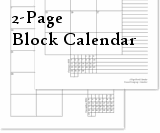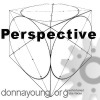Linking Verbs - A List & is it Used as Action or Linking
Linking verbs are verbs that do not show action; instead, the linking verb renames or describes the subject.
In this example sentence, "The kitten looked happy" the verb looked is used as a linking verb. Many times the verb looked is an action verb because someone is looking for something, but in the example sentence, looked describes the kitten in the predicate and that makes looked function as a linking verb. If the word happy is used in the subject, then happy would have been an ordinary adjective.
Subject | Predicate
The happy cat | looked for the ball. "Looked" functions as an action verb.
The cat | looked happy. "Looked" functions as a linking verb.
There are more examples below and suggestions about how to tell the difference between a linking verb and an action verb. The table below lists some verbs that are commonly used as linking verbs. Remember, the words in the list are not always used as linking verbs; it is the FUNCTION of the verb in the sentence that determines its kind.
Words that may be used as Linking Verbs
Verbs that are sometimes used as linking verbs
[list may not be complete]
feel
taste
look
smell
appear
grow
remain
stay
turn
seem
sound
become
prove
Forms of to be are sometimes used as linking verbs
is
am
are
was
were
be
being
been
Linking Verbs continued ...
Many important verbs do not express action; some verbs can link a noun or an adjective to the subject. This type of verb is called a linking verb. The linking verb connection between the subject to the noun or adjective is something like an equal sign. She is tall. -- She = tall.
In grammar books the linked noun or linked adjective is sometimes called a predicate noun or a predicate adjective. Sometimes either one is called a subjective complement.
A reminder of basic sentence structure 
__subject__|__predicate__
The two diagrams below are the basic sentence structure of linking verbs.
_subject_|_linking verb_\_predicate noun_
_subject_|_linking verb_\_predicate adjective_
A predicate noun is located in the predicate and it renames the subject.
A predicate adjective is located in the predicate and it describes the subject.
Examples
-
I am calm.
The be verb am links I and calm. Calm describes my state of being.
-
George Washington became the first president.
Became links George Washington and president.
Check by saying, George = president, or President George Washington, or substitute the linking verb with a form of "to be" as in: George Washington was president.
Helping Verb Confusion
The forms of to be can also be used as helping verbs such as in the following sentence:
Terry is looking.
In the sentence above, "is" does not function as a linking verb. "Is looking" tells what Terry is doing (the action), not what Terry is being.
Is the Verb used as Linking or Action
State of being verbs can be used as linking verbs or action verbs. We need to be able to determine the function of the verb to tell the difference. The following sentences contain verbs that are used as either linking or action verbs. I have included checking methods.
- Linking:
The monkey looked hungry.
(Hungry monkey or monkey is hungry) In this sentence looked is a linking verb. - Action:
The monkey looked for food.
"For food" is a prepositional phrase and it must be omitted before checking. The sentence remaining after omitting the prepositional phrase is "The monkey looked". There is no noun or adjective to link monkey to. Looked is an action verb in this sentence. - Linking: The soup tasted
good.
Check: soup is good, good soup, soup = good - Action: I tasted the soup.
Check: I am the soup (no), soup am I (no) I = soup (no) - Linking: He grew tired of
walking.
Of walking is a prepositional phrase and not included in the check. You should omit the prepositional phrase to check: "He grew tired".
Check: He is tired, tired is he, he = tired. - Action: He grew into a tall man.
Omit the prepositional phrase into a tall man before checking. That leaves the sentence, "He grew." There's no noun or adjective left to link to, so grew is used as an action verb in this sentence. - Linking:
Mother appeared happy at her party. Omit the prepositional phrase, "at her party". Now the sentence reads, "Mother appeared happy." Check: mother is happy, happy mother, mother = happy. - Action: Mother appeared
quietly in the room.
Omit the prepositional phrase, "in the room". The sentence now reads: Mother appeared quietly. Quietly is an adverb, omit the adverb. "Mother appeared." There is no noun or adjective to link mother to, so appeared is used as an action verb. - Linking:
The bugle sounds loud.
Check: bugle is loud, loud bugle, bugle = loud (yes, yes, and yes) - Action:
The bugle sounded loudly.
Check: Bugle is loudly. (no)
Loudly describes the verb. It answers the question How? Loudly is an adverb, omit the adverb. That leaves the sentence "The bugle sounded."
Hello Visitor!
I am currently working on this website to add to its ginormousness. Thank you for visiting, and please subscribe yearly to access my many printable files! Donna Young
May 13, 2021

 It's a brand new 2-page per month calendar that is ideal to put into your full-sized binder.
It's a brand new 2-page per month calendar that is ideal to put into your full-sized binder. Fact Family worksheets
Fact Family worksheets Make a Sock Bunny
Make a Sock Bunny


